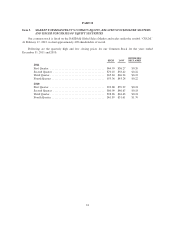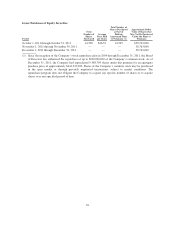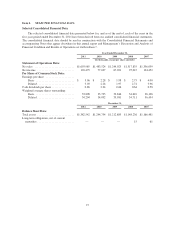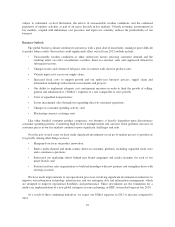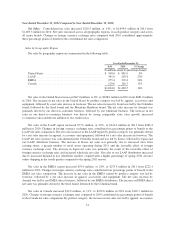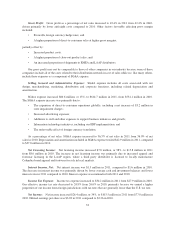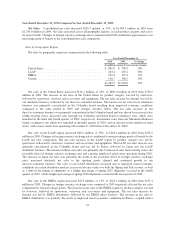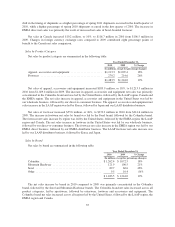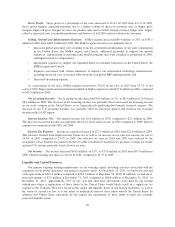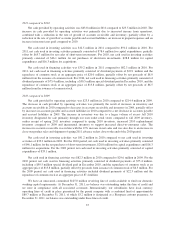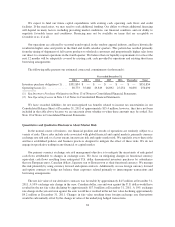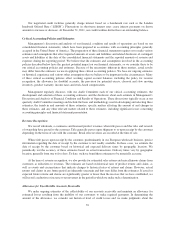Columbia Sportswear 2011 Annual Report Download - page 34
Download and view the complete annual report
Please find page 34 of the 2011 Columbia Sportswear annual report below. You can navigate through the pages in the report by either clicking on the pages listed below, or by using the keyword search tool below to find specific information within the annual report.subject to substantial cyclical fluctuation, the effects of unseasonable weather conditions, and the continued
popularity of outdoor activities as part of an active lifestyle in key markets. Volatile economic environments in
key markets, coupled with inflationary cost pressures and input cost volatility, reduces the predictability of our
business.
Business Outlook
The global business climate continues to present us with a great deal of uncertainty, making it more difficult
to predict future results. Factors that could significantly affect our full year 2012 outlook include:
• Unseasonable weather conditions or other unforeseen factors affecting consumer demand and the
resulting effect on order cancellations, reorders, direct-to-consumer sales and suppressed demand in
subsequent seasons;
• Changes in mix and volume of full price sales in contrast with closeout product sales;
• Volatile input costs across our supply chain;
• Increased fixed costs to support growth and our multi-year business process, supply chain and
information technology infrastructure investments and projects;
• Our ability to implement adequate cost containment measures in order to limit the growth of selling,
general and administrative (“SG&A”) expenses to a rate comparable to sales growth;
• Costs of expedited transportation;
• Lower incremental sales through our expanding direct-to-consumer operations;
• Changes in consumer spending activity; and
• Fluctuating currency exchange rates.
Like other branded consumer product companies, our business is heavily dependent upon discretionary
consumer spending patterns. Continuing high levels of unemployment and concerns about potential increases in
consumer prices in our key markets continue to pose significant challenges and risks.
Over the past several years we have made significant investments in our go-to-market process to position us
for growth. Among other things we have:
• Sharpened our focus on product innovation;
• Built a multi-channel and multi-country direct-to-consumer platform, including expanded retail store
and e-commerce operations;
• Refocused our marketing efforts behind new brand campaigns and media strategies for each of our
major brands; and
• Restructured our sales organizations to build relationships with new partners and strengthen those with
existing accounts.
We have made improvements to our operational processes, involving significant investments in initiatives to
improve our information technology infrastructure and our enterprise data and information management, which
are designed to improve operational flexibility and performance. These investments are the foundation for a
multi-year implementation of a new global enterprise resource planning, or ERP, system that began in late 2010.
As a result of these continuing initiatives, we expect our SG&A expenses in 2012 to increase compared to
2011.
29







